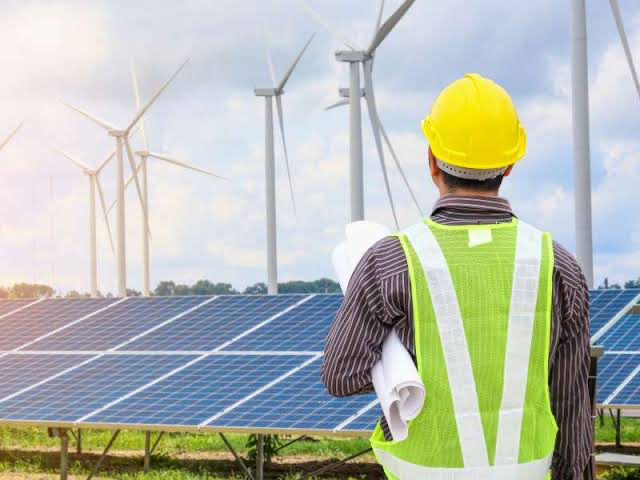South Africa is making significant strides in renewable energy manufacturing. According to Gaylor Montmasson-Clair, Senior Economist at Trade & Industrial Policy Strategies (TIPS), the country is poised to capitalize on the growing global demand for renewable energy.
In the early 1990s, the world had virtually no wind or solar energy capacity. By 2023, the installed capacity reached 375 GW of solar and 108 GW of wind energy. As the cost of renewable energy continues to decline, this trend is expected to continue.
South Africa’s renewable energy share rose from less than 1% in 2000 to 7% in 2022. Massive investments in utility-scale renewable energy generation and private-sector initiatives are driving further growth.
“The renewable energy and battery storage industrial value chain is restructuring,” Montmasson-Clair explained. Initially dominated by Global North manufacturing, the industry is now more diversified. China and India are significant players, shifting the power dynamics in the value chain.
The global scramble for raw materials to manufacture solar panels, wind turbines, and batteries is intensifying. Countries are trying to capture a share of manufacturing production through extensive green industrial policy packages.
Montmasson-Clair sees this trend as an opportunity for South Africa to drive industrial development. The country’s broad industrial capabilities in related value chains, such as mining and steel, support the renewable energy sector.
In the solar PV value chain, South Africa has capabilities in assembling mounting structures, trackers, and modules. However, production capacity is often limited. Cell and wafer production are still in exploratory stages, but the production of green polysilicon, leveraging South Africa’s silica deposits, is a potential future opportunity.
On the wind energy side, the local manufacturing of steel and concrete towers, some internals, and rotor assembly is possible. These capabilities have been idle due to a lack of demand but can be revived by local steel manufacturers. The next frontier is blade production, which previously existed in the country. Hub manufacturing and the production and assembly of nacelles could be considered in the medium term.
The lithium-ion battery value chain is well-developed in South Africa. While battery cells are mainly imported from China, the country has capabilities in mineral beneficiation, casing and assembly, and electrical systems. The vanadium-based battery value chain is still nascent but boasts local capabilities, including vanadium mining and refining, electrolyte production, and vanadium-redox flow battery assembly.
Local capabilities also exist in manufacturing inverters, civil works, balance of plant components, and numerous services like testing and certification. Transformers, combiner boxes, and switchgear are additional components that can be procured locally.
Montmasson-Clair identifies and selects industrialization opportunities for short-term prioritization. However, most component manufacturing investments require a minimum annual demand ranging from 500 MW to 1 GW for at least five years to be viable.
As South Africa continues to develop its renewable energy sector, these local capabilities and investments will play a crucial role in meeting global demand. The country’s strategic positioning in the renewable energy value chain underscores its potential as a significant player in the global market.
Source: ESI Africa



